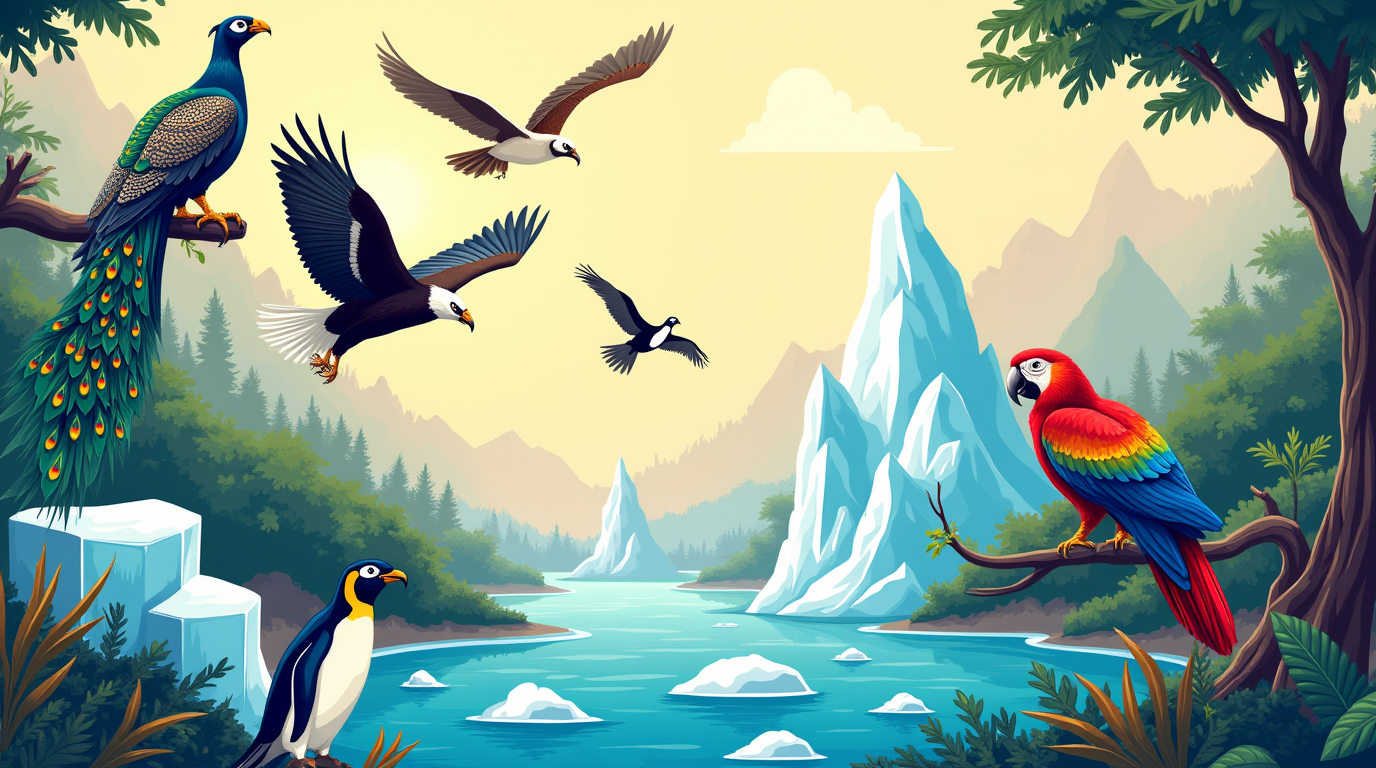Table of Contents
Birds are among the most fascinating creatures on our planet. With over 10,000 bird species globally, these feathered marvels captivate us with their vibrant colors, melodic songs, and incredible adaptations. This article explores the diversity of bird species, their unique characteristics, and their significance in our ecosystems. Whether you are an avid birdwatcher or a curious enthusiast, understanding bird species is a journey worth embarking upon.
What Defines a Bird Species?
A bird species is defined as a group of birds that can interbreed and produce fertile offspring. Each species possesses distinct traits such as size, plumage, song, behavior, and habitat preferences. Scientists classify bird species into orders and families based on shared characteristics, making it easier to study their evolutionary relationships.
Types of Bird Varieties
Bird species can be broadly categorized based on their habitats, diets, and behaviors. Here are some notable types:
- Waterfowl: Ducks, geese, and swans fall into this category. These birds are typically found in aquatic environments and are known for their webbed feet and waterproof feathers.
- Raptors: Birds of prey, such as eagles, hawks, and owls, are equipped with sharp talons and beaks for hunting.
- Songbirds: Known for their melodic tunes, this group includes sparrows, robins, and warblers. Songbirds are often colorful and play a significant role in pollination and seed dispersal.
- Flightless Birds: Ostriches, emus, and penguins are examples of flightless birds. Despite their inability to fly, they exhibit fascinating adaptations for survival.
- Seabirds: Gulls, albatrosses, and puffins are seabirds adapted to marine life. Their unique features include salt glands and specialized wings for gliding.
Popular Bird Varieties Around the World
1. American Bald Eagle
A symbol of strength and freedom, the bald eagle is native to North America. With a wingspan of up to 7.5 feet, it’s a powerful predator found near water bodies.
2. Peacock (Indian Peafowl)
Known for its dazzling plumage, the peacock is native to South Asia. Its colorful feathers and courtship displays make it one of the most admired bird species globally.
3. Peregrine Falcon
Famous for being the fastest bird, the peregrine falcon can reach speeds of over 200 mph during a dive. It’s found on every continent except Antarctica.
4. Emperor Penguin
Residing in the Antarctic, emperor penguins endure extreme cold and are known for their cooperative breeding behavior.
5. Scarlet Macaw
A vibrant parrot species native to Central and South America, the scarlet macaw is renowned for its intelligence and social nature.
Importance of Bird Species in Ecosystems
Birds play critical roles in maintaining ecological balance. Here are a few key contributions:
- Pollination and Seed Dispersal: Birds like hummingbirds and sunbirds pollinate flowers, while frugivorous species aid in seed dispersal.
- Pest Control: Insectivorous birds help control pest populations, reducing the need for chemical pesticides.
- Indicators of Environmental Health: Changes in bird populations can signal shifts in ecosystem health, making them valuable bioindicators.
Threats to Bird Varieties
Despite their ecological importance, many bird species face threats due to human activities and environmental changes. Key challenges include:
- Habitat Loss: Urbanization, deforestation, and agriculture reduce natural habitats, pushing many species to the brink of extinction.
- Climate Change: Rising temperatures and altered weather patterns disrupt migratory routes and breeding seasons.
- Pollution: Chemicals, plastics, and oil spills significantly impact bird health and habitats.
- Hunting and Poaching: Illegal hunting and the exotic pet trade threaten several bird species.
Conservation Efforts for Bird Species
Protecting bird species requires a collective effort involving governments, organizations, and individuals. Notable conservation measures include:
- Protected Areas: Establishing national parks and wildlife sanctuaries provides safe habitats for birds.
- Legislation: Laws like the Migratory Bird Treaty Act help regulate hunting and trade.
- Citizen Science: Projects like eBird and the Christmas Bird Count involve the public in monitoring bird populations.
- Restoration Projects: Reforestation and wetland restoration support the recovery of bird habitats.
Tips for Birdwatchers
If you’re interested in exploring bird species, birdwatching is an excellent way to start. Here are some tips:
- Invest in Quality Binoculars: A good pair of binoculars enhances your ability to observe birds in detail.
- Learn Bird Calls: Familiarizing yourself with bird songs and calls can help identify species without visual confirmation.
- Choose the Right Locations: Visit bird-rich areas like wetlands, forests, and coastal regions.
- Record Observations: Keep a journal to note down the birds you spot, their behaviors, and habitats.
Conclusion
Bird species are an integral part of our planet’s biodiversity. By appreciating their beauty, understanding their roles in ecosystems, and supporting conservation efforts, we can ensure their survival for future generations. Whether you’re captivated by the grace of an eagle in flight or the cheerful chirping of a sparrow, the world of birds offers endless wonders to explore.
With this comprehensive guide to bird species, Animal Island aims to inspire a deeper connection with the avian world. Join us in celebrating and protecting these incredible creatures.
